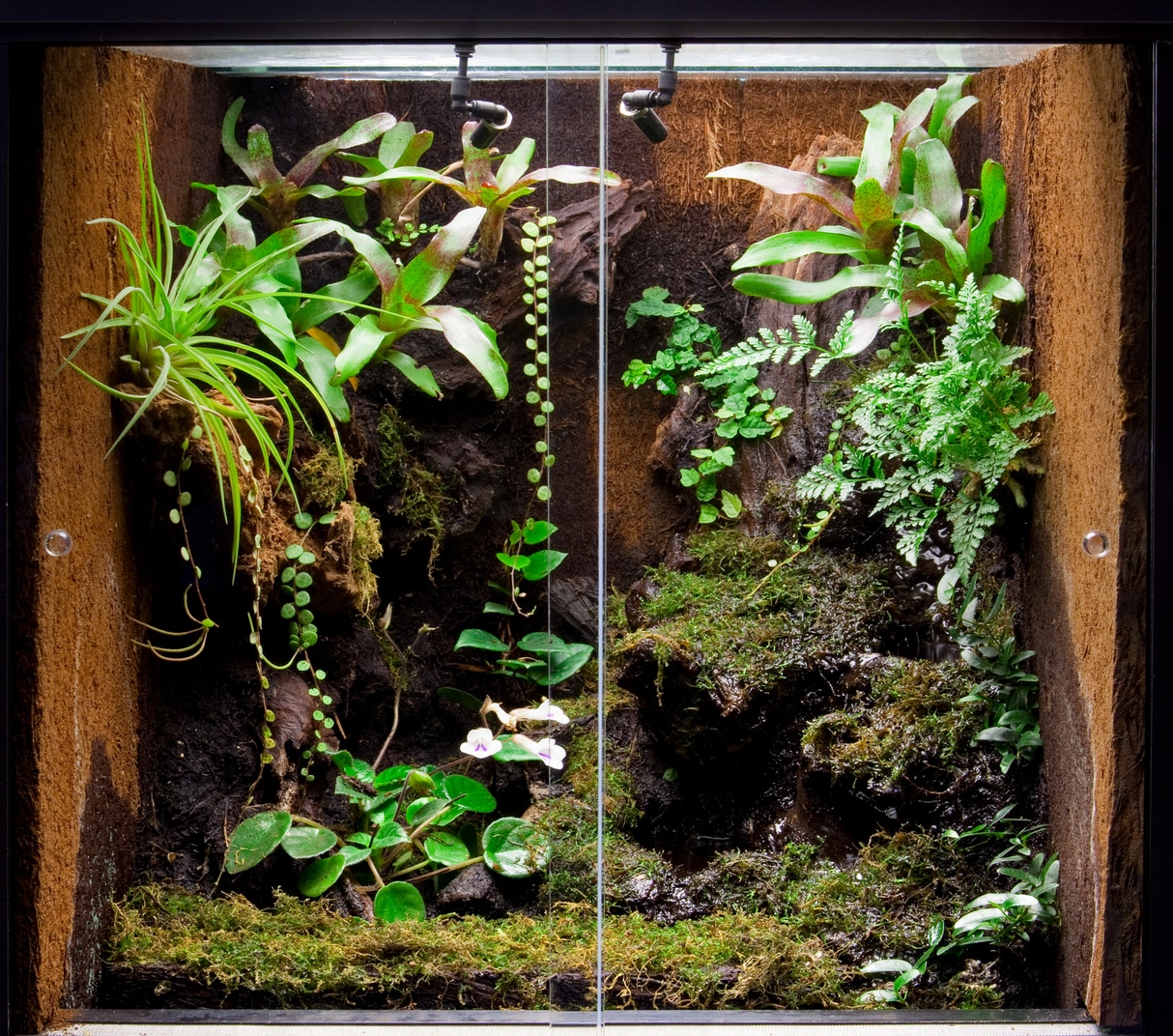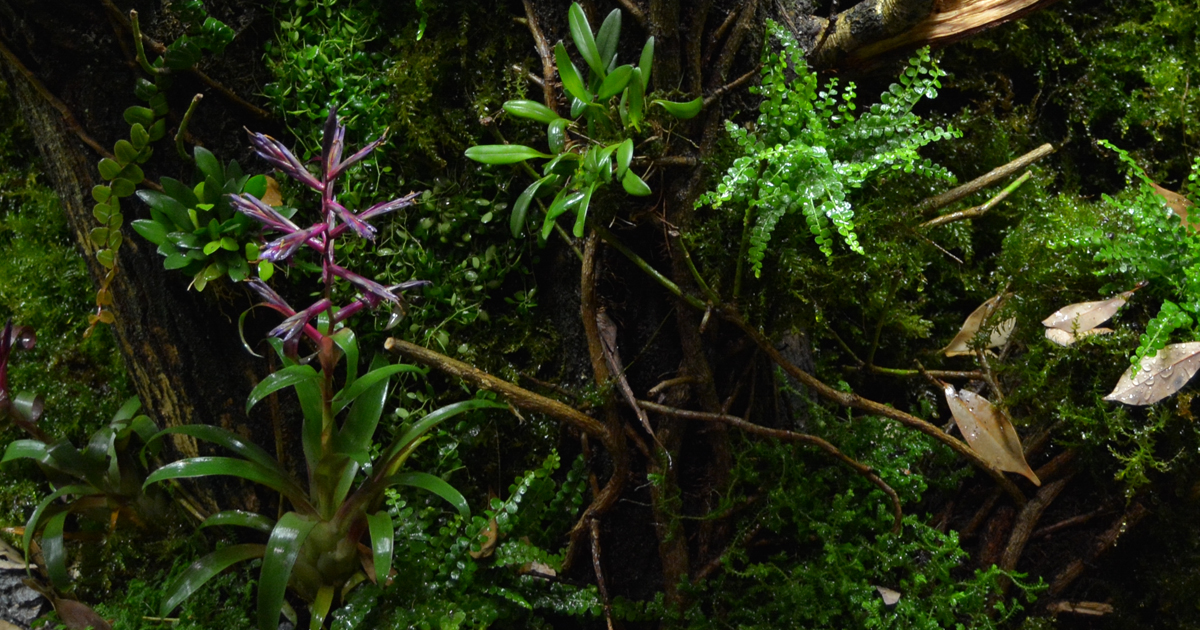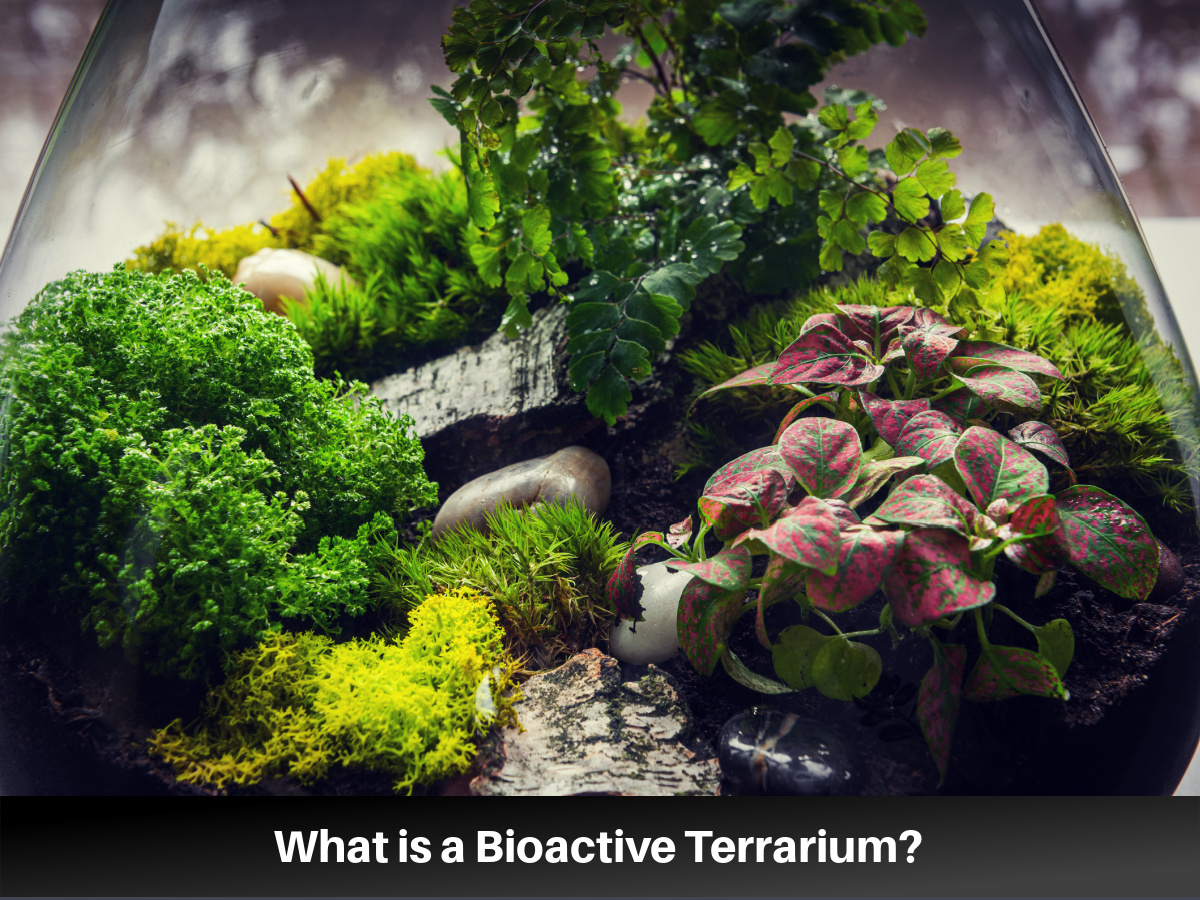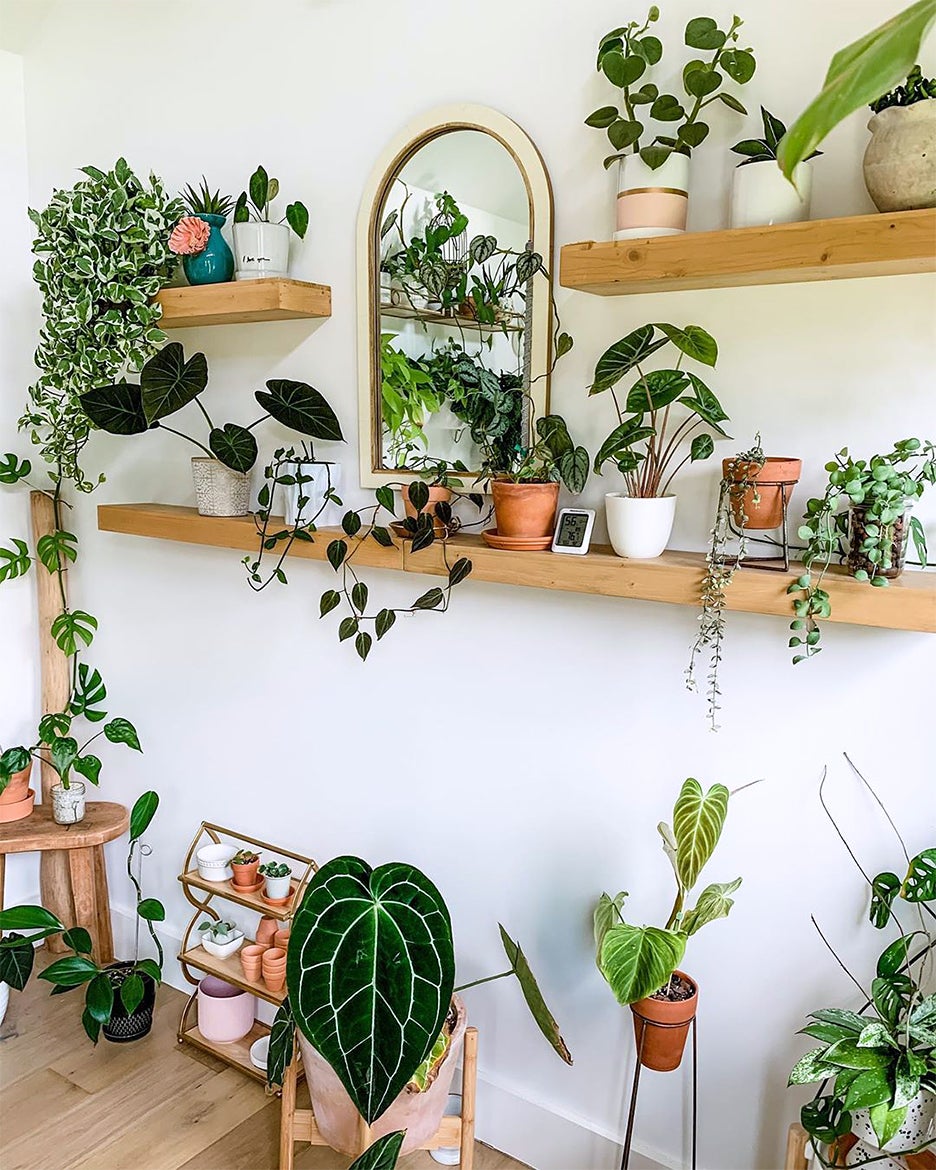Essential Invertebrates for a Healthy Bioactive Terrarium Ecosystem Guide

The Underworld Orchestra: Essential Invertebrates for a Self-Balancing Bioactive Terrarium
Step into the hidden world beneath your terrarium glass, where tiny workers keep the ecosystem humming without fanfare. After over 20 years knee-deep in substrates and countless trial-and-error episodes (yes, including some odor disasters you’ll want to avoid), I’ve learned what no product label ever told me: your cleanup crew isn’t just a trend—it’s the backbone of a living system.

This guide goes beyond “springtails are good.” It’s a hands-on, boots-in-the-dirt masterclass in choosing, managing, and troubleshooting your terrarium’s essential invertebrates. I’ll share specific species recommendations, population targets, real-life mishaps, and advanced hacks so you can stop firefighting mold and start orchestrating balance.
Act I: Why Your “Cleanup Crew” Is More Than Just a Fad
You might think of cleanup crews as nice-to-haves—a cosmetic fix for messy tanks. But here’s what I see every time I peek beneath bark or leaf litter at midnight: armies of springtails tunneling through substrate dust; armored isopods devouring fallen leaves; earthworms aerating soil like miniature tillers.
These critters digest waste, prevent mold outbreaks, break down dead plant matter into nutrients plants can use, and keep moisture levels balanced by their activity. Ignore them or choose poorly—and you’ll quickly face:
- Fungus fogging glass
- Ammonia stings from decomposing waste
- Soil compaction choking roots
- Plant decline despite best care
The balance? It comes down to diversity, environment matching, and ongoing monitoring:
- No single species will cover all cleanup needs. For a deeper dive into the best options, check out Top Detritivores to Include in Your Bioactive Terrarium.
- Desert dwellers won’t thrive in rainforest setups.
- Track populations quantitatively—not just eyeball counts.
Pro tip: Take notes weekly for at least the first three months—and prepare to tweak your crew rather than hope it fixes itself.
Act II: My Personal Roster – Beyond “Springtails & Friends”
The Bioactive Big Three – My Tried-and-Tested Ensemble
Springtails (Folsomia candida, Entomobrya spp., and others) — Mold Exterminators & Micro Waste Warriors
I’ve learned the hard way that cheap wild-collected springtails often introduce fungus gnats, which lead to infestations rapid enough to make your head spin. Buy captive-bred cultures from reputable suppliers—your tank deserves better.
Why Springtails Matter:
- Gobble mold spores before they balloon into visible fuzz
- Rapid reproduction (30–40% weekly growth under 60%+ humidity)
- Clean up micro-waste and leftovers after bigger scavengers finish
Want to understand exactly how these tiny powerhouses support your setup? See How Springtails Improve Soil Health in Terrariums for a full breakdown of their soil-enhancing benefits.
Seeding Tips:
Sprinkle onto moist sphagnum moss just before lights-out (springtails work best under cover). Start feeding once weekly with a tiny pinch of baker's yeast or specialized food; avoid overfeeding—a handful here can drown populations with microbial bloom.
Real Talk: Legendary keeper Bill S. told me his biggest springtail explosion came after adding brewer’s yeast during sticky summer heat—population tripled within days but required careful humidity management to prevent die-off.
Isopods — Hardworking Heavy Lifters & Debris Crushers
Isopods shine because they handle parts springtails can’t touch: crunching fallen wood chunks, shredding thick leaves, and loosening compacted substrate layers. Their diversity is rich—knowing which species suits your setup changes everything.
Here’s what my long-term tracking shows:
| Species | Strength | Notes on Care | Population Density Recommendation |
|---|---|---|---|
| Porcellionides pruinosus ("Powder Blue/Orange") | Fast breeders; active diggers | Need extra limestone/cuttlefish bone for exoskeleton health | 25–40 per 10 gallons |
| Armadillidium vulgare | Extremely hardy; curls when disturbed | Tolerates lower humidity (down to ~35%) | Good fallback for dry enclosures |
| Porcellio laevis | Larger size; excellent surface scavenger | Slower reproducer; needs thicker leaf litter | Use sparingly in smaller tanks |
Isopods also like hiding spots—a pair of cork bark tubes placed opposite corners keeps territories stable. Overcrowding leads to plant damage. If you see foliage chewing or bark stripping that wasn’t there before—that’s a red flag to reduce numbers or add more leaf litter.
For a detailed look at how isopods support ecological harmony, see The Role of Isopods in Maintaining a Balanced Terrarium Ecosystem.
Earthworms (Eisenia hortensis & Enchytraeids) — Soil Aerators & Nutrient Cyclers
At first hesitant to add earthworms due to mite infestations from careless vendors (lesson: quarantine is mandatory), I now consider them indispensable in planted vivariums.
Earthworm Wisdom:
- Allow six weeks post-setup before adding earthworms—this lets fungal and microbial communities stabilize.
- Ideal temperature range is 65–75°F; below this they slow dramatically.
- They improve aeration and turn coarse soil particles into fine humus—roots love the silky feel.
That said… earthworms can disrupt root mats if introduced too early or in excessive numbers. I aim for about 5 worms per 10 gallons in small tanks; larger paludariums handle proportionally more but watch moisture very closely.
In super tiny setups (<5 gallons), I recommend dwarf enchytraeids instead—they do similar work minus bulk disturbance.

Curious about which worm species are best for nutrient cycling? Read Choosing the Best Worms for Nutrient Recycling in Bioactive Setups for species recommendations and care tips.
Act III: Lessons From Failures That Saved Me Years of Headaches
Because nothing teaches like mistakes—here are some of mine that might save you grief:
Desert Tank Disaster — When Misting Isn’t Enough
Attempted “one size fits all” approach by tossing dairy cow isopods into arid gecko tank with 28% RH—and watched them shrivel like burnt flakes within days. Only hardy Armadillidium vulgare hung on near cooler clay pot bases with slight evening moisture.
Lesson: Cleanup crews must fit microclimate perfectly—or else you’re stockpiling dead biomass that invites bacteria rather than clearing it away.
Overpopulation Plant Damage — Too Many Isopods Can Backfire
Left powder blue isopods multiply unchecked—from initial 50 individuals to over 300 per square foot! Within weeks bromeliad leaves had ugly holes as isopods turned from detritivores into nibblers on live tissue when starved for food sources underground.
Fix: Quickly layered an additional three handfuls oak leaf mulch, reduced isopod load by removing excess individuals manually, then observed recovery within two weeks.
“Compost Soup” Incident — When Cultures Go Rogue
My first mistake was not quarantining wild-collected springtails properly—resulted in fungus gnat plague so vicious it nearly ruined a dart frog breeding tank. Waste piled up faster than cleanup crews could handle with zero back-up plan ready.
Takeaway: Always quarantine new microfauna cultures away from main animals for at least three weeks while observing population health and pest signs carefully.
Act IV: Advanced Tactics Seasoned Keepers Swear By
Beginner setups benefit from core species—but deeper balance requires layering biodiversity thoughtfully:
Biodiversity Layers To Cover All Bases
- Surface Dwellers:
- Larger woodlice like Porcellio laevis patrol leaf litter surfaces efficiently without digging deep.
- Burrowers:
- Smaller isopods (Porcellionides pruinosus) and earthworms churn through substrate deeper down.
- Micro Fauna:
- Multiple springtail species active at different substrate depths help control micro-mold hotspots.
- Feeding Diversity:
- Mix leaf litter types—magnolia holds moisture longer but breaks down slowly; sycamore leaves rot faster but prevent slimy buildup.
- Microhabitat Variation:
- Place hiding spots strategically (cork slabs west wall, bark strips east wall) so critters establish stable territories regardless of heat gradients changing week-to-week.
If you want to explore how all these microfauna work together to break down waste, don’t miss How Microfauna Contribute to Waste Breakdown in Terrariums.
Population Tuning Without Chemicals Or Panic
During summer rains or heated greenhouse conditions:
- Increase mulch depth by ~0.5 inch pre-summer spike.
- Relocate large swarms manually into quarantine culture tanks where they can be harvested or controlled.
- Use stacked slate or dense plant cover as deep “safe zones” if predatory frogs nibble cleanup crew numbers early.
- Cinnamon dusting applied carefully around edges wards off fungus gnats without harming beneficial fauna (less than half teaspoon per 10 gallons).
Act V: Tools & Sourcing — What Actually Works on the Road
Over years attending expos and ordering online, experience taught me:
Substrate Mixes That Stand Up To Time & Traffic
Atlanta Botanical Garden blend (ABG mix): Coconut fiber + tree fern root + orchid bark + sphagnum peat delivers nutrient flow and moisture retention lasting nine months even under heavy breathers like poison dart frogs mid-breeding frenzy.
If mixing isn’t your jam:
Josh’s Frogs’ ready-made blends arrive sterile yet perfectly damp since my first orders in 2018—never had a failed batch yet.

My Trusted Suppliers (And Why)
-
Josh’s Frogs (joshsfrogs.com)
Clean captive-bred cultures; ship insulated during cold weather—as close to plug-and-play as you can get. -
Bugs In Cyberspace (bugsincyberspace.com)
Amazing variety of unique isopod strains with bold colors alive despite shipping stressors—great source if you want something eye-catching. -
Local Herpetology Clubs & Expos
Bonus community support—not just reliable fauna but future emergency contacts when things go sideways fast!
Quarantine Protocol That Never Let Me Down
- Always open new cultures outside main animal room;
- Observe daily for mites/mold for minimum three nights;
- Transfer critters using soft paintbrush only after preparing destination substrate carefully;
- Never combine unrelated additions until clear three-week symptom-free period;
Trust me—it saves weeks of headaches later chasing pests or unexpected microbes otherwise hitchhiking home silently on live fauna.
Act VI: Real-Life Wins & Woes From Fellow Keepers (& Me)
Remember Rachel's frog palace? She had vibrant blue morphs thriving but black mold creeping everywhere until she tripled her white springtail count and added just eight powder blue isopods post-quarantine—with results:
- Visible mold gone by day ten;
- Ferns pushing new growth four weeks later;
- Balanced humidity matched her plants’ subtle nutrient uptake cues perfectly after that shift;
Or Ben’s desert gecko failure?
Premium panda king isopods died within seventy-two hours despite hides and careful cacti corner misting—the dry substrate simply too hostile without open-air moisture cycles Ben later implemented alongside switching to native Armadillidium species restored order permanently (no odors since September).
My own desktop paludarium experiment with full-size earthworm initially overwhelmed root mesh inside two weeks—but swapping them for enchytraeid worm micro-teams supported perfect cycling while fire-bellied newts lounged above through two winters—system stable now going strong four years later!
Act VII: Troubleshooter’s Almanac – Recognize Patterns Before Panic Hits
Don’t wait for obvious collapse signals before acting! Here’s my proven checklist for common headaches:
| Problem | Diagnosis Steps & Actions |
|---|---|
| Mold Blooms Persist? | Check if leaf litter layer compresses slightly but bounces back when pinched. Double springtail dose on affected patches. Increase airflow subtly if humidity above 85%. |
| Cleanup Crew Missing? | Confirm basking zone temps do not exceed species limits. Add fresh bark refuges nightly. Reduce predation by adding dense surface plants or moss patches near vents. Replenish populations as needed with quarantined transfers. |
| Gnats or Mite Outbreak? | Dust cinnamon around edges weekly. Remove standing water sources. Open ventilated side panel midday if ambient RH allows. Consider sticky traps outside tank sealed areas. |
| Substrate Collapse/Funky Smells? | Aerate top inch gently every fortnight with chopstick; Rotate substrate contact points monthly; If stench lasts >7 days post-adjustment restart bottom quarter using reserved aged ABG mix backups. |
When these steps don’t fully restore order within two weeks—or multiple issues compound—it might be time for partial teardown reset combined with freshly sourced crew inoculations under strict quarantine protocols again.
For more on keeping your microfauna populations thriving year after year, see Maintaining Invertebrate Populations for Long-Term Terrarium Health.
Final Movement: How To Become A Maestro Of Your Living System Today
Mastery doesn’t come overnight—it takes patient observation blended with practical action repeated across seasons:
- Evaluate meticulously once per week—even if it means shaking substrate gently under headlamp light late at night.
- Take longhand notes tracking which corners grow best plants versus where problems recur seasonally year-on-year.
- Engage peers early! Post updates/questions/photos online via VivariumForum/Dendroboard/#BioactiveBrigade Discord—you’ll trade war stories and get rescue advice far faster than random Googling.
- Rotate and restock clean cultures regularly—a thriving cleanup crew wears thin eventually under hungry tongues/claws living above ground level!
- Most importantly—tell your own story someday—the next keeper facing mysterious funk will thank you eternally for mapping forgotten survival trails nobody covers well elsewhere online beyond TikTok/Instagram reels fluff!
So tonight—as you lift that glass door gently and peer beneath softly rustling leaves—remember this unseen world works overtime while you sleep quietly… built on patience earned one glorious messy episode at a time.
Welcome aboard—the orchestra plays on... maestro!
Quick Start Checklist For New Keepers:
✔ Choose at least one springtail species plus two contrasting isopod species tailored to your habitat humidity/temp ranges
✔ Seed earthworms only after ~6 weeks stabilization and monitor moisture closely
✔ Provide varied leaf litter types & ensure calcium source available throughout habitat
✔ Set up multiple secure hiding spots using cork/tube stacks across tank corners
✔ Quarantine all new cultures minimum three weeks observing pests/mold signs before adding
✔ Monitor populations quantitatively weekly using simple counts along fixed sample areas
✔ Prepare backup culture tanks to rotate adults out/reseed main exhibits as needed
✔ Troubleshoot with cinnamon dusting for gnats + manual relocation/removal when needed
Stick close to these guidelines—and you'll save yourself untold headaches chasing stinky soils or brittle leaves forevermore!
This isn’t just “cleanup crew basics”—it’s your invitation into the fascinating sub-surface symphony powering every lush moss cushion, healthy frog toe pad, and fragrant orchid bloom inside glass walls worldwide every day.
You’ve got this!



